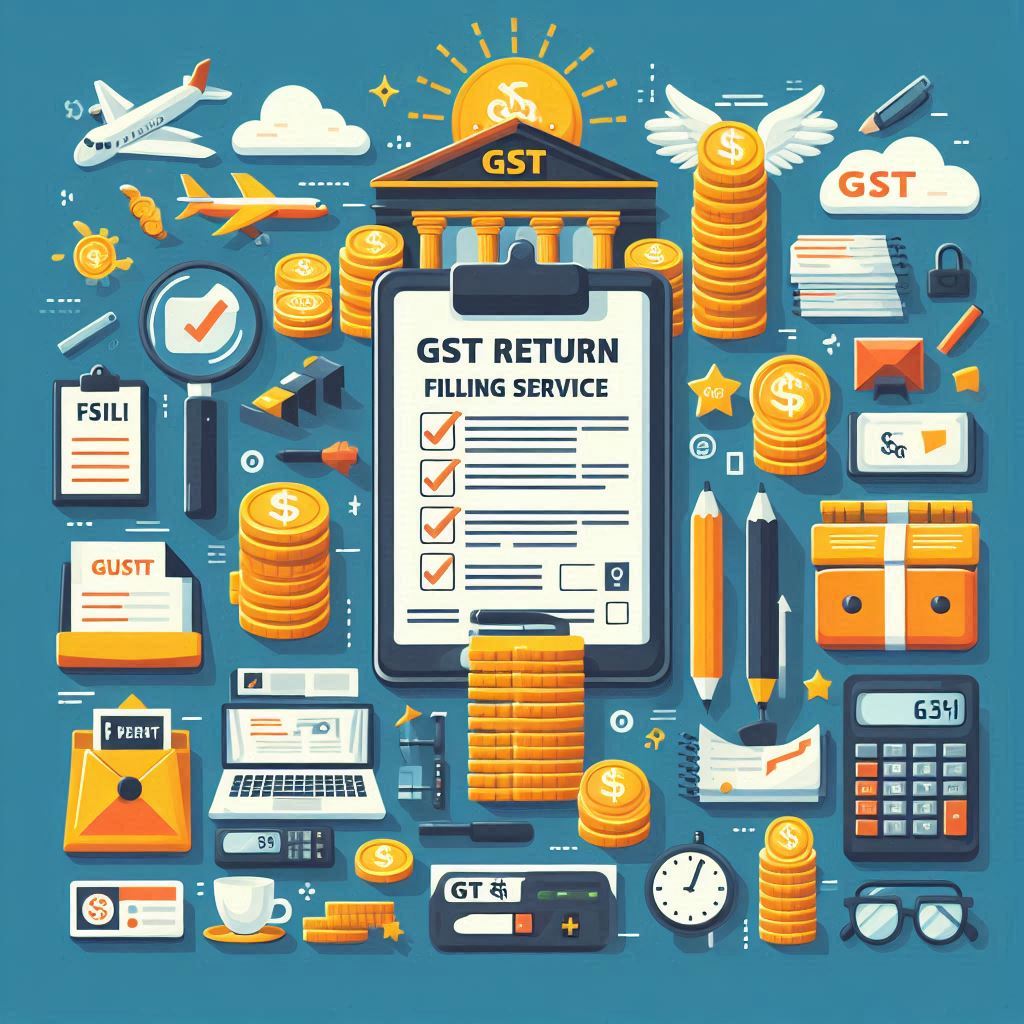
GST Return Filling
The Goods and Services Tax (GST) is a comprehensive indirect tax levied on the manufacture, sale, and consumption of goods and services at the national level in India. It’s a destination-based tax, meaning the tax is collected at the point of consumption. GST has simplified the indirect tax system by subsuming many previous indirect taxes like excise duty, service tax, and VAT.
GST Return Filing under the Regular Scheme
Businesses registered under GST are required to file periodic returns. The frequency of these returns depends on the type of business and its turnover. The regular scheme is for businesses with an annual turnover exceeding a certain threshold (currently ₹40 lakh for goods and ₹20 lakh for services, with some exceptions). These businesses typically file monthly returns.
Types of GST Returns
Here are the main GST returns filed by regular taxpayers:
-
GSTR-1: This return contains details of outward supplies of goods and services, i.e., sales. It includes information such as invoice details, recipient GSTIN, and place of supply. GSTR-1 is usually filed monthly, but businesses with a turnover of up to ₹5 crore can opt for quarterly filing.
-
GSTR-3B: This is a summary return that provides a consolidated summary of outward supplies, inward supplies, input tax credit (ITC) claimed, and tax payable. It is a simplified return and is filed monthly by all regular taxpayers.
-
GSTR-2B: This is an auto-generated statement that shows the ITC available to a taxpayer based on the GSTR-1 filed by their suppliers. It helps in reconciling ITC and ensures accuracy in claiming credit.
-
GSTR-9: This is an annual return that consolidates all the monthly or quarterly returns filed during the financial year. It provides a comprehensive summary of the business’s transactions and is due by December 31st of the following financial year.
-
GSTR-9C: This is a reconciliation statement that is required to be filed by taxpayers with an annual turnover exceeding ₹5 crore. It reconciles the annual return (GSTR-9) with the audited annual financial statements of the business.
Process of Filing GST Returns
Here’s a step-by-step guide to filing GST returns under the regular scheme:
-
Gather Relevant Documents: Before starting the filing process, gather all necessary documents such as sales invoices, purchase invoices, debit and credit notes, and bank statements.
-
Login to the GST Portal: Go to the official GST portal (www.gst.gov.in) and log in using your GSTIN and password.
-
Prepare GSTR-1:
- Navigate to the ‘Returns’ section and select ‘GSTR-1’.
- Choose the relevant tax period (month or quarter).
- Upload invoice details in the prescribed format (usually a CSV or JSON file). You can also manually enter the details.
- Ensure all details are accurate, including GSTIN of the recipient, invoice number, date, value, and tax rates.
- After verifying the details, submit GSTR-1.
-
File GSTR-3B:
- Go to the ‘Returns’ section and select ‘GSTR-3B’.
- Choose the relevant tax period.
- The system will auto-populate some data based on GSTR-1.
- Provide details of inward supplies, ITC claimed, and tax payable.
- Pay the tax due either through electronic cash ledger or by utilizing ITC.
- File GSTR-3B after verifying all details.
-
Reconcile ITC with GSTR-2B:
- Download GSTR-2B from the portal.
- Compare it with your purchase records to ensure all eligible ITC is reflected.
- If there are discrepancies, follow up with your suppliers to rectify them.
-
File GSTR-9 (Annual Return):
- File GSTR-9 after the end of the financial year.
- It will consolidate data from all GSTR-1 and GSTR-3B filed during the year.
- Provide additional details such as details of transactions not included in monthly returns, late fees paid, and refunds claimed.
-
File GSTR-9C (Reconciliation Statement, if applicable):
- If your turnover exceeds ₹5 crore, get your accounts audited.
- File GSTR-9C reconciling the audited financial statements with GSTR-9.
Key Considerations for GST Return Filing
- Timely Filing: It’s crucial to file GST returns within the due dates to avoid late fees and penalties.
- Accurate Data: Ensure all information provided in the returns is accurate and matches the supporting documents.
- ITC Reconciliation: Regularly reconcile ITC with GSTR-2B to maximize credit and avoid discrepancies.
- Record Keeping: Maintain proper records of all transactions, invoices, and returns for at least six years.
- Utilize Technology: Use GST software or accounting tools to automate data entry and simplify the filing process.
- Stay Updated: Keep abreast of the latest GST rules, notifications, and updates issued by the government.
Benefits of Filing GST Returns Regularly
- Compliance with the Law: Filing returns on time ensures compliance with GST regulations and avoids legal issues.
- Smooth Business Operations: Regular filing helps maintain a clear record of transactions and facilitates smooth business operations.
- Input Tax Credit: Accurate filing enables businesses to claim eligible ITC, reducing their tax liability.
- Avoidance of Penalties: Timely filing prevents late fees and penalties.
- Building Trust: Consistent compliance builds trust with customers, suppliers, and tax authorities.
Conclusion
Filing GST returns under the regular scheme is a crucial responsibility for businesses in India. By understanding the different types of returns, the filing process, and key considerations, businesses can ensure compliance, optimize ITC, and avoid penalties. Utilizing technology and staying updated with the latest GST norms can further streamline the process and contribute to efficient tax management.




Reviews
There are no reviews yet.